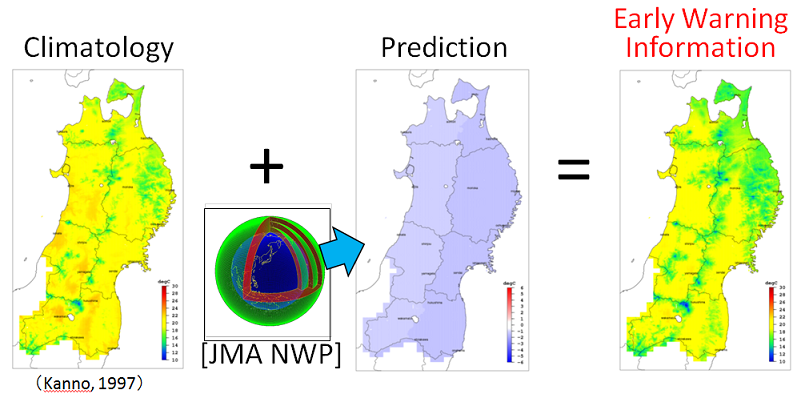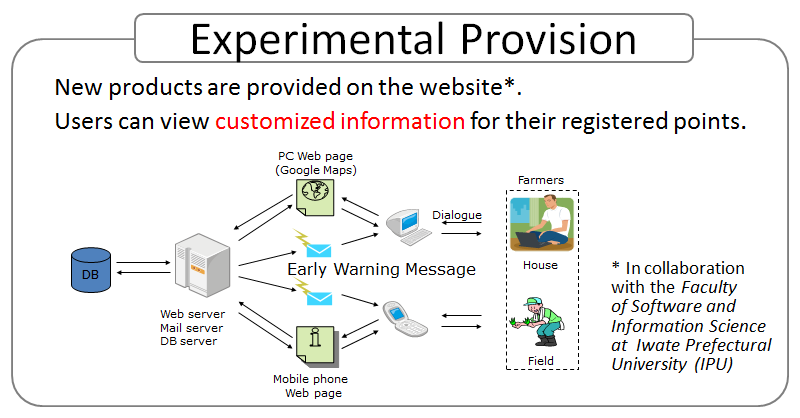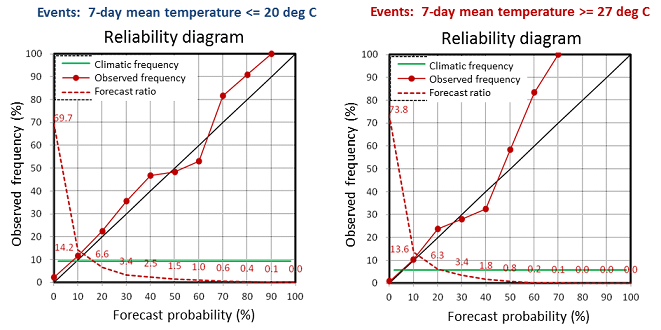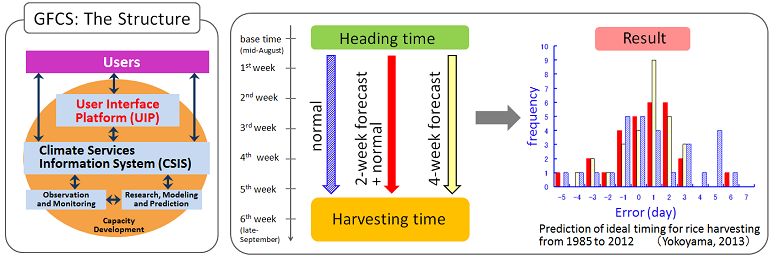IntroductionPaddy rice is a staple food of the Asian region. As production volumes rise worldwide, competition in breed improvement and cultivation technology development becomes increasingly more intense. Meanwhile, although production volume has decreased due to population decline in Japan, demand for higher quality has gradually risen. Recent years have frequently seen extremely hot summers in association with global warming and decadal climate variability, and this influences the quality of rice with issues such poor grain filling.The Japan Meteorological Agency (JMA) and the National Agricultural and Food Research Organization (NARO) have started a pilot project to develop an early warning system using two weeks forecasts. JMA also engages in dialogue with local agricultural organizations toward the development of a User Interface Platform (UIP). The Rice Early Warning SystemBackgroundVarious studies have been conducted on the influence of anomalous climate conditions (Table 1). Based on the results obtained, climate prediction information is considered to have the potential to reduce the impact of adverse climate events.
ProcedureJMA experimentally provides temperature prediction data with a 1-km resolution based on its two-week forecasts and NARO's normal dataset (Figure 1). The procedure is as follows:

Figure 1 Procedure for 1-km mesh temperature data 
Figure 2 Experimental provision to users Verification

Figure 3 Verification of second-week temperatures User Interface Platform DevelopmentJMA engages in ongoing dialogue with local agricultural organizations to promote the use of climate information in agricultural decision making. As local-government agricultural staff are usually in close contact with farmers in their areas, dispatching climate information to agricultural organizations supports UIP development. One such organization has performed investigation using one-month forecast data to predict the ideal timing for rice harvesting (Figure 4), and will provide agricultural advice to farmers based on the results in 2014. This is a best practice for UIP development. 
Figure 4 User Interface Platform (UIP) development |